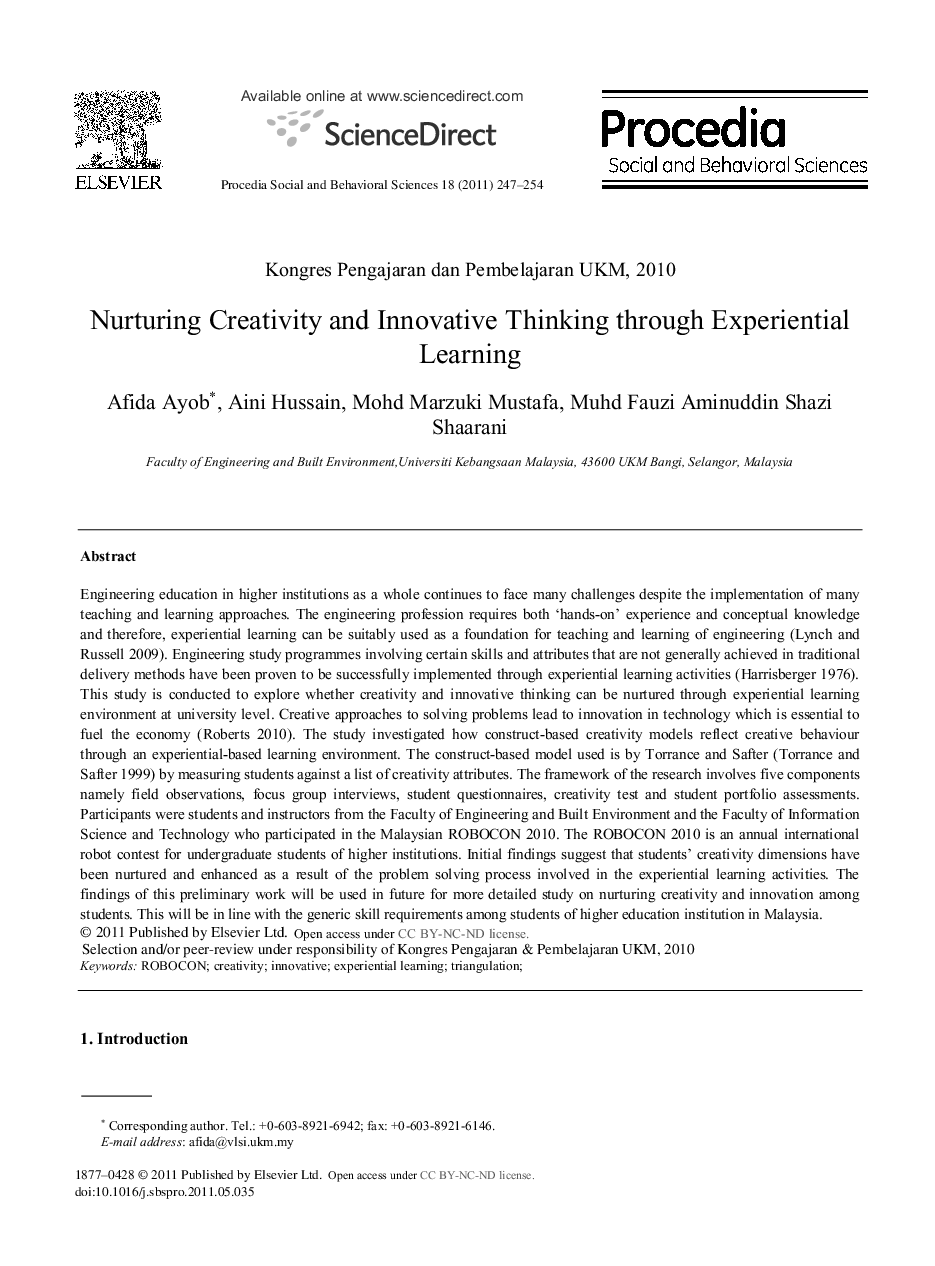| Article ID | Journal | Published Year | Pages | File Type |
|---|---|---|---|---|
| 1124009 | Procedia - Social and Behavioral Sciences | 2011 | 8 Pages |
Engineering education in higher institutions as a whole continues to face many challenges despite the implementation of many teaching and learning approaches. The engineering profession requires both ‘hands-on’ experience and conceptual knowledge and therefore, experiential learning can be suitably used as a foundation for teaching and learning of engineering (Lynch and Russell, 2009, ). Engineering study programmes involving certain skills and attributes that are not generally achieved in traditional delivery methods have been proven to be successfully implemented through experiential learning activities (Harrisberger, 1976, ). This study is conducted to explore whether creativity and innovative thinking can be nurtured through experiential learning environment at university level. Creative approaches to solving problems lead to innovation in technology which is essential to fuel the economy (Roberts, 2010, ). The study investigated how construct-based creativity models reflect creative behaviour through an experiential-based learning environment. The construct-based model used is by Torrance and Safter (Torrance and Safter, 1999) by measuring students against a list of creativity attributes. The framework of the research involves five componentsnamely field observations, focus group interviews, student questionnaires, creativity test and student portfolio assessments. Participants were students and instructors from the Faculty of Engineering and Built Environment and the Faculty of Information Science and Technology who participated in the Malaysian ROBOCON 2010. The ROBOCON 2010 is an annual international robot contest for undergraduate students of higher institutions. Initial findings suggest that students’ creativity dimensions have been nurtured and enhanced as a result of the problem solving process involved in the experiential learning activities. The findings of this preliminary work will be used in future for more detailed study on nurturing creativity and innovation among students. This will be in line with the generic skill requirements among students of higher education institution in Malaysia.
